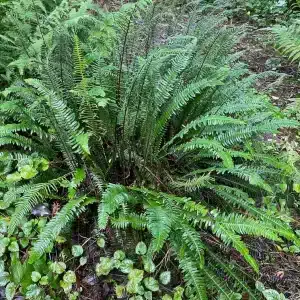
Dandelions (Taraxacum officinale), often dismissed as weeds, are one of nature’s most versatile plants. While their leaves, roots, and flowers are commonly used in herbal remedies and cooking, the buds of the dandelion hold a hidden culinary potential. These tiny, green, unopened flower buds can be turned into delicious, tangy capers—a sustainable and flavorful alternative to traditional capers made from the caper bush (Capparis spinosa). Here’s how to make the most of dandelion buds and create your own homemade capers.
Dandelion buds are packed with flavor, offering a slightly bitter, tangy taste that makes them perfect for pickling. They are rich in vitamins A, C, and K, as well as minerals like iron, calcium, and potassium. Additionally, harvesting dandelion buds is a sustainable practice that transforms an often-overlooked plant into a valuable ingredient for your kitchen.
How to Forage Dandelion Buds
- When to Harvest:
- Look for dandelions in early spring or late fall when the buds are tightly closed and haven’t yet opened into flowers.
- Choose buds that are green and firm, avoiding those that have already started to bloom.
- Where to Forage:
- Harvest dandelions from areas that are free of pesticides, herbicides, and pollutants. Avoid roadsides or lawns treated with chemicals.
- How to Harvest:
- Gently pinch the base of the bud to pluck it from the plant. Take care not to disturb the root system so the plant can continue to grow.
How to Turn Dandelion Buds into Capers
Turning dandelion buds into capers is a simple process involving pickling. Here’s a step-by-step guide:
Ingredients:
- 1 cup dandelion buds (washed and dried)
- 1 cup white vinegar or apple cider vinegar
- 1 cup water
- 1 tablespoon salt
- 1 teaspoon sugar (optional, for a slightly sweet brine)
- 1 garlic clove (optional)
- 1 teaspoon whole black peppercorns
- 1 bay leaf (optional)
Instructions:
- Clean the Buds:
- Rinse the dandelion buds thoroughly to remove dirt and insects. Pat them dry with a clean towel.
- Prepare the Brine:
- In a small saucepan, combine vinegar, water, salt, and sugar (if using). Bring the mixture to a boil, stirring until the salt dissolves. Remove from heat.
- Pack the Jars:
- Place the cleaned dandelion buds into a sterilized jar. Add the garlic, peppercorns, and bay leaf for extra flavor.
- Pour the Brine:
- Pour the hot brine over the dandelion buds, ensuring they are fully submerged.
- Seal the Jar:
- Seal the jar tightly and let it cool to room temperature. Store in the refrigerator for at least a week to allow the flavors to develop.
- Enjoy:
- Your homemade dandelion capers are ready to use in salads, pasta dishes, or as a garnish. They can be stored in the refrigerator for up to 3 months.
Culinary Uses for Dandelion Capers
Dandelion capers are versatile and can be used in various dishes to add a tangy, briny flavor:
- Salads: Toss them into green salads, potato salads, or grain bowls for a burst of flavor.
- Pasta: Add them to pasta dishes for a zesty kick.
- Sauces: Use them in sauces like tartar sauce or remoulade.
- Pizza Topping: Sprinkle them over pizza for a gourmet touch.
- Garnish: Use them to garnish fish, roasted vegetables, or deviled eggs.
Health Benefits of Dandelion Bud Capers
- Rich in Nutrients: Packed with vitamins and minerals, dandelion buds boost overall health.
- Supports Digestion: The slight bitterness of dandelion buds stimulates digestion and bile production.
- Antioxidant Properties: The buds are rich in antioxidants, which combat oxidative stress and inflammation.
- Low in Calories: Dandelion capers are a healthy, low-calorie addition to your meals.
Tips for Success
- Pick Only What You Need:
- Avoid overharvesting dandelions to ensure they continue to thrive in their natural environment.
- Experiment with Flavors:
- Add spices like dill, mustard seeds, or chili flakes to your brine for unique flavor variations.
- Patience is Key:
- Allow the capers to sit in the brine for at least a week before consuming them for the best flavor.
- Use Fresh Buds:
- Always use freshly harvested buds to ensure the best taste and texture.
Dandelion buds are a hidden gem in the world of foraging, offering a sustainable and flavorful alternative to traditional capers. With just a little effort, you can transform these tiny buds into a gourmet ingredient that elevates your culinary creations. Not only are dandelion capers delicious, but they are also packed with health benefits, making them a perfect addition to any kitchen. So next time you spot dandelions growing in your yard, think twice before weeding them out—you might just be throwing away a tasty treasure!
The fig tree (Ficus carica) is well-known for its sweet, luscious fruit, but its leaves are equally remarkable for their health benefits and versatility. Used in traditional medicine for centuries, fig leaves are packed…
Banana peels are often overlooked and discarded, but they are packed with nutrients and have a wide range of practical uses. Instead of throwing them away, banana peels can be repurposed in ways that benefit your…
Heliotropium indicum, commonly known as Indian heliotrope, is a medicinal plant that has been widely used in traditional medicine across various cultures. Belonging to the Boraginaceae family, this small, herbaceous…







I like the valuable information you provide in yoour articles.
I will bookmark yokur blog aand checxk agaion here frequently.
I am quite certaion I will learn plnty of neww stuff rigt here!
Goood lck for the next!
Your article helped me a lot, is there any more related content? Thanks!